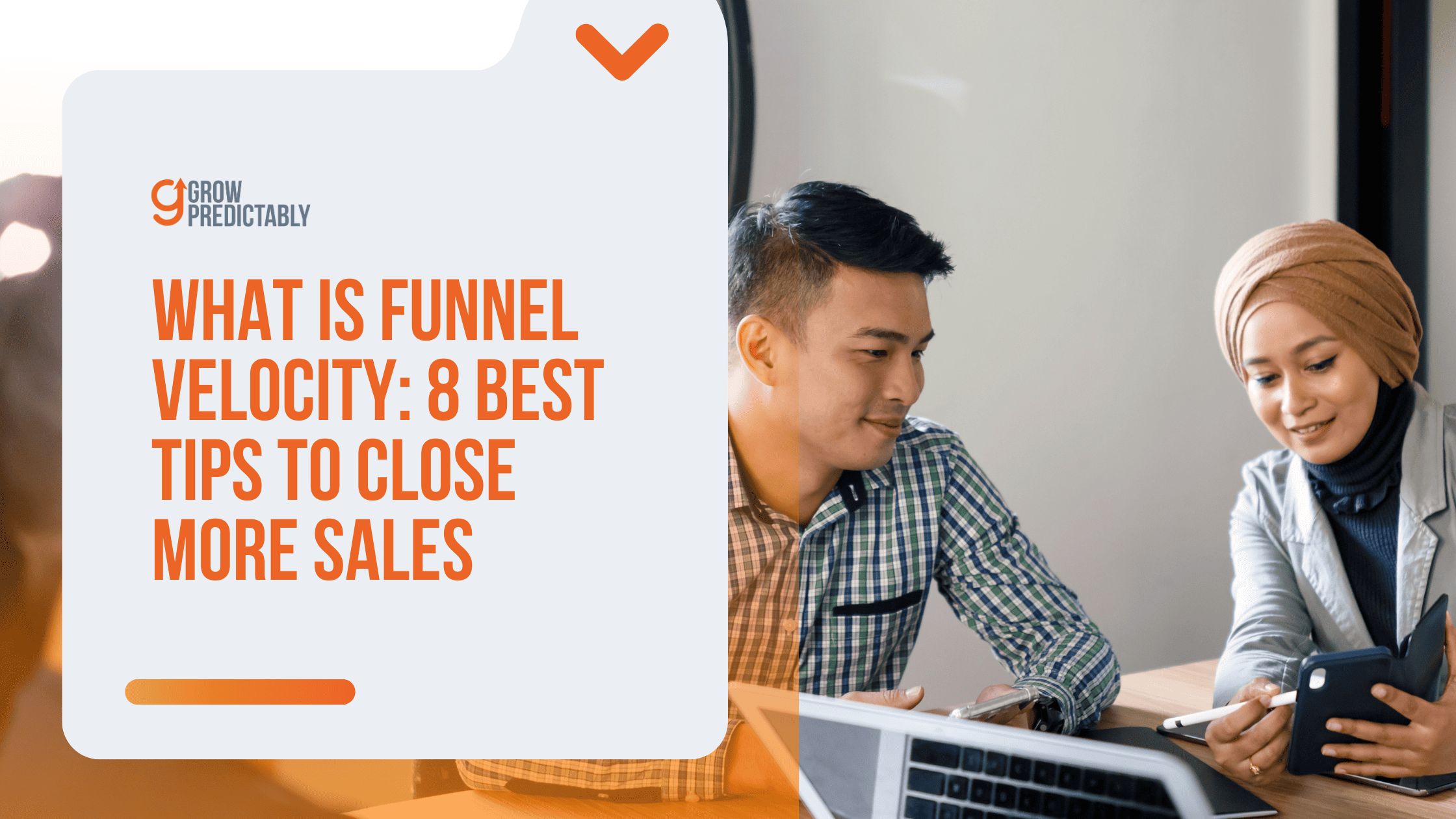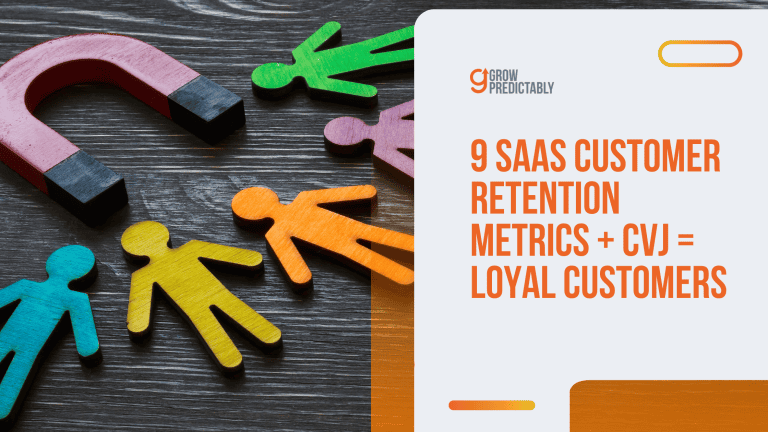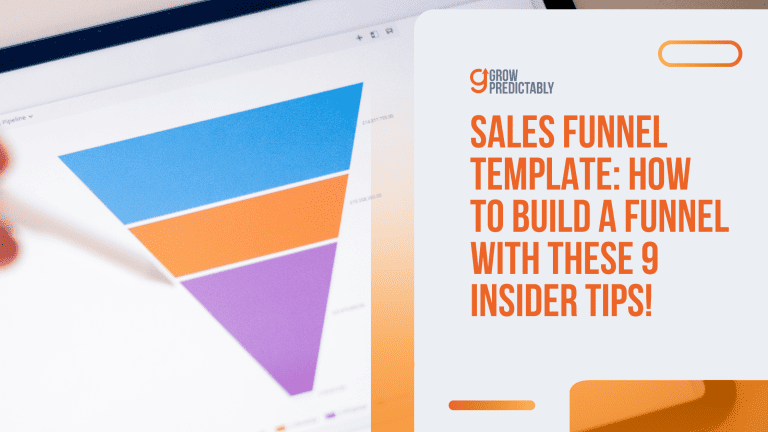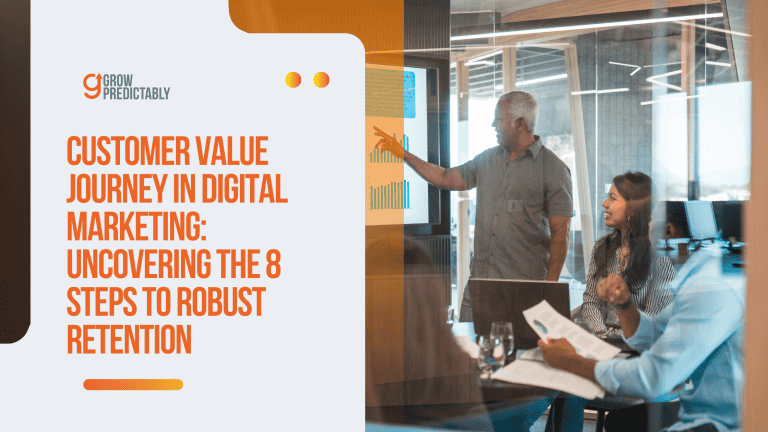What is Funnel Velocity: 8 Best Tips to Close More Sales
How fast are your leads moving through your sales pipeline? Are they progressing at a pace that drives results, or do they seem stuck, causing you to worry about your conversion rates?
Funnel velocity is the metric you need to keep an eye on! It’s all about measuring the speed of your leads’ journey and identifying any bottlenecks that might be slowing down your sales process.
In this blog post, we’ll dive into the world of funnel velocity, exploring what it is and how you can calculate it. And, of course, we’ll share some valuable tips on how to enhance your funnel velocity and elevate your sales performance. Ready to take this journey with us? Let’s go!
Defining Funnel Velocity in Marketing
Picture a physical funnel – it gets narrower as it reaches the bottom, right? Now, imagine the customer journey funnel, representing the path from awareness to conversion. It’s quite similar!
Funnel velocity, sometimes referred to as sales velocity, is a crucial metric that gauges the pace at which leads progress through the sales pipeline. This metric helps you understand how many leads and swiftly prospects are moving toward becoming customers.

Funnel velocity serves as a data-driven marketing instrument for sales managers, empowering them to assess and enhance the performance of both their sales cycle and marketing efforts. This valuable metric tracks the total number of leads generated, conversion rates, and the average time required for a prospect or a lead to become a customer.
By monitoring funnel velocity, you can effectively evaluate the well-being of your sales pipeline and pinpoint any bottlenecks that might be causing prospective clients to abandon the process at a specific stage in the sales cycle.
What Are the Factors that Affect Funnel Velocity?
Type of Product and Service Marketed
Sales velocity can be greatly influenced by pricing and the kind of product or service being promoted. This is because potential customers need to evaluate their necessity for the product and determine if they’re willing to pay the premium price during the sales cycle.
On the other hand, commodities are usually bought based solely on price, which leads to a quicker progression through the sales funnel faster.
A high-end luxury item will likely move more slowly through the marketing funnel than a low-cost commodity.
Moreover, products with longer shelf lives tend to move at a slower pace through the funnel compared to those with shorter shelf lives. This occurs because customers have more time to contemplate their purchase and more time period compare prices before making a final decision.
Price
As a rule of thumb, higher prices often make customers pause and reconsider their decision to purchase, leading to a slower sales velocity.
Conversely, lower prices may give customers the impression that they’re getting a bargain, encouraging them to act more swiftly in the sales cycle.
Special promotions or discounts can also affect sales velocity, enticing customers to make a purchase before the offer expires.
Perceived Value
Perceived deal value refers to the customer’s impression of a product or service’s worth, irrespective of its price. When customers perceive a high value, they are more inclined to progress rapidly through the purchase funnel, increasing sales velocity.
On the contrary, if customers perceive a low deal value, they may waver or even decide not to make a purchase altogether.
Customers may be more likely to purchase a luxury car if they believe that it will provide them with status and prestige.
Availability
When a product has high demand and limited supply, customers are often more inclined to navigate swiftly through the sales funnel to secure it.
However, when a product is easily accessible, customers may spend more time comparing various options before finalizing their purchase.
When something is scarce, people naturally assume that it must be valuable. By creating a sense of urgency, you can encourage your customers to take action sooner rather than later and bump up sales velocity.
Competition
The more competitors there are, the more challenging it becomes to connect with potential customers and guide them into becoming buyers via the sales funnel.
Customers may be more likely to purchase a car from a dealership that has few other dealerships in the area selling the same car.
Furthermore, the more entrenched the competitors, the tougher it gets to convince potential customers to transition to your product or service.
How Do You Calculate Sales Velocity?
To determine your sales velocity, you must be aware of the number of opportunities entering your funnel, the average size of the deal size and value, and the conversion rate of a lead progressing to a deal.

Multiply this data and then divide the outcome by the duration of a specific period in your sales pipeline.
By assessing sales velocity, you can monitor the revenue generated, pinpoint bottlenecks in your funnel, track sales velocity, and enhance conversion rates.
8 Tips for Sales Managers to Bump Up Sales Funnel Velocity
1. Define Your Target Customers
Many businesses mistakenly believe they can sell to anyone who shows interest. However, the reality is that not everyone is a potential customer for your product or service.
Attempting to sell to everyone can be disastrous, resulting in inefficient resource allocation and low conversion rates in your sales pipeline.
Gaining a clear understanding of your target customer enables you to concentrate your marketing efforts and sales funnel, connecting with qualified leads more likely to have an interest in your product or service.

By identifying your target customer, you can conserve time and money while also boosting the likelihood of making a sale. Furthermore, a well-defined target customer allows you to craft a more personalized sales pitch that resonates with the buyer, enhancing sales velocity.
2. Develop a Unique Selling Proposition
The ability to clearly express what sets your product or service apart is crucial for any business aiming to increase sales velocity.
A well-defined unique selling proposition (USP) assists potential customers in comprehending what they can anticipate from your company and why they should opt for you over competitors.
In a saturated market, a USP can make the difference between acquiring quality leads and losing prospects. Additionally, a robust USP can enable other companies and you to command premium prices for your products or services.
3. Create Compelling Marketing Materials
Marketing holds a significant position in the sales process, and top-notch marketing materials can be a crucial factor in augmenting sales velocity.
The goal is to make potential customers want to learn more about your product or service and ultimately make a purchase.
Engaging marketing materials can aid in enhancing sales velocity by capturing attention, sparking interest, and promoting conversions to qualified opportunities. Additionally, they can contribute to building brand awareness and fostering a positive connection with your company.
4. Understand Your Competition
Being aware of your competitors can aid in pinpointing areas for improvement in your own sales funnel and enable you to focus your marketing efforts more efficiently.
Recognizing your competition allows sales teams and you to learn from missteps, exploit their weaknesses and win rates, and generate more sales opportunities.

Moreover, a profound comprehension of the competitive landscape can assist you in detecting emerging trends, establishing new revenue and objectives, and guaranteeing that you consistently stay ahead of the curve concerning sales velocity.
5. Train Your Sales Team
Your sales team serves as a crucial asset in building your sales organization and velocity. They must be adequately trained on your product or service, along with your target customer and competition.
Furthermore, they say sales reps should be provided with the appropriate tools at every stage of the sales cycle, enabling them to effectively sell to potential new customers and boost sales velocity.
6. Implement an Inbound Sales Strategy
An inbound sales approach prioritizes drawing in strangers and converting them into qualified leads, as opposed to using cold-calling or other outbound tactics for your sales pipeline.
This strategy typically involves crafting captivating content that attracts people and employing targeted marketing techniques like lead nurturing and scoring.
7. Use Technology To Your Advantage
Technology has brought about a revolution in the business world, and there’s no justification for lagging in the race to the summit. By harnessing technology to your benefit, you can augment sales velocity and outpace competitors.
One method to accomplish this is by implementing a customer relationship management (CRM) system in your sales cycle.
A CRM system can help you track customer data and collect valuable insights that can be used to improve your marketing and sales velocity.
Furthermore, you can employ technology to automate monotonous tasks like lead generation and email marketing. This will liberate your time, allowing you to concentrate on more significant tasks such as nurturing sales velocity and sealing deals.
8. Measure, Test, and Adjust
Ultimately, assessing the outcomes of your efforts is essential in order to refine your approach within your sales pipeline as necessary. By persistently observing key metrics like conversion rates and cycle times in your funnel velocity, you can pinpoint areas that need improvement.
Frequently experimenting with new techniques and strategies, making adjustments based on your sales velocity results.
FAQs
Given that the average attention span is now shorter than that of a goldfish, it’s no surprise that many businesses are struggling to keep up with the pace of change. One way to stay ahead of the curve is to ensure your sales velocity is as high as possible. Below are the top questions you might have about funnel velocity.
In Summary,
There’s no denying that the sales process can often be lengthy and protracted. Sales velocity is among the most critical sales metrics, offering insights into the well-being of your sales funnel and the tendencies of your target audience.
By employing some of the suggestions highlighted in this blog post, you can begin enhancing your calculated sales velocity right away. So, why wait? Start now and witness an improvement in your overall revenue goals and profits!







